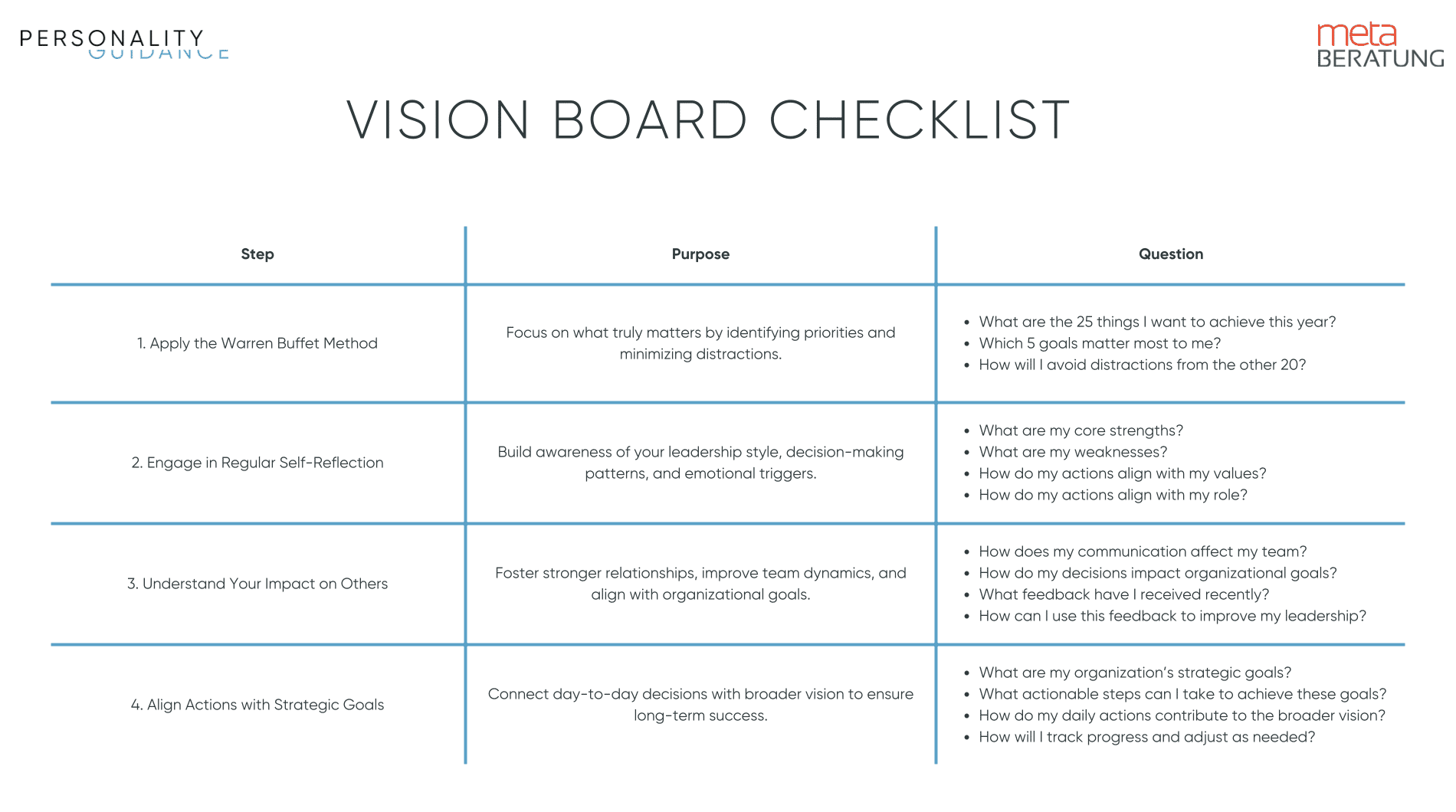Vision Board 2025
Are you still in planning mode, or is your vision board for 2025 ready?
Date: 15. January 2025
Categories: PGarticle, Leadership

Nicole Neubauer, CEO of Personality Guidance, tells us more about her Vision Board Process after 20 Years as a CEO.
Are you still in planning mode, or is your vision board for 2025 ready? Mine is—and it includes knitting and AI.
My vision board is a blend of ambitious goals for my businesses in DACH and personal aspirations that keep me motivated. I try to keep a good balance online and offline, as I’ve discovered the importance of balancing a demanding professional life with offline activities that energize me, such as reading, knitting, and exploring new areas like AI, psychology, and coaching.
I reflect my business goals with my leadership team in a yearly planning session in January. This takes 2 days usually: the goals are reviewed and then broken down into rocks and milestones that are followed up and reported on weekly. After reading the book Traction in 2024, I found this an inspiration and introduced the methods to my teams.
1.The Warren Buffet Method: My Planning Approach
I usually set aside some time right at the beginning of January and write down what I want to focus on and achieve this year. Personally, I like working with Warren Buffet’s list: write down 25 things that you want to achieve, circle the 5 that matter to you most, and then work throughout the calendar year on keeping down the 20 less important as they are the biggest distractions. I do a quarterly review of my goals to re-focus.
Becoming a more strategic and self-aware leader is an ongoing process that requires intentional development in key areas. Below are steps to help you on this journey:
2. Engage in Regular Self-Reflection
• Action: Dedicate time for introspection, asking yourself questions like: What are my core strengths and weaknesses? How do my actions and decisions align with my values and long-term vision? How do they align with my role and its strategic focus?
• Purpose: Regular self-reflection helps you build awareness of your leadership style, decision-making patterns, and emotional triggers. This insight is essential for adapting your behavior and leadership approach strategically.
• Tip: Set aside 10–15 minutes each day to journal your thoughts, challenges, and learnings. Consider asking trusted colleagues or mentors for feedback to broaden your perspective.
3. Understand Your Impact on Others
• Action: Pay attention to how your communication and decisions affect your team and organization. Seek regular feedback and be open to critique.
• Purpose: Being aware of your impact allows you to adjust your leadership style to foster stronger relationships, improve team dynamics, and align with organizational goals.
• Tip: Tools like Hogan personality assessments help you gain a deeper understanding of how others perceive your leadership, analyze core strengths, and development areas.
4. Align Actions with Strategic Goals
• Action: Develop a clear understanding of your organization’s strategic goals and align your leadership decisions with them. Break down these long-term objectives into actionable steps for your team and yourself.
• Purpose: To lead strategically, you must be able to connect your day-to-day decisions with the broader vision. This alignment ensures that you are consistently working towards long-term success.
• Tip: Practice setting clear, measurable goals with your team. Regularly review progress and adjust strategies based on outcomes, keeping both short-term objectives and long-term vision in mind.
By focusing on these steps, you can become more self-aware, make more informed decisions, and lead with a greater sense of purpose and alignment with strategic goals.
Nicole Neubauer, CEO of Personality Guidance and MetaBeratung




